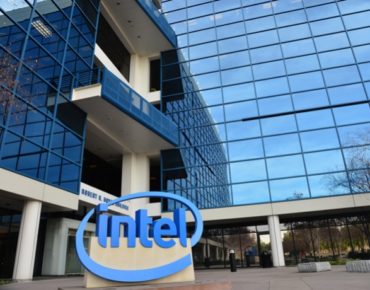Intel 7nm May Arrive Sooner than Expected; Moore’s Law Cadence to Follow?

2018 has been a rough one for Intel, abuse has been heaped on the company for its dilatory delivery of a 10nm process technology – first slated for 2016, now for late 2019. This writer and fellow “knights of the keyboard” (as baseball immortal Ted Williams referred to the press), along with Wall Street analysts, have drilled “Chipzilla” for letting AMD (already out with a 10nm process) seize a growing share (though still in the single digits, at last count) of the data center server processor market. For Intel abuse, here’s a typical reader comment, on the Seeking Alpha investment site, responding to an article characterizing Intel’s 10nm problem as a “misstep”: “Misstep implies a single mistake. Intel’s 10nm process has been delayed so many times I’d call it more of a mis-walk or mis-stroll.”
But now comes a published report from AnandTech stating that, by contrast with its 10nm, Intel’s 7nm process tech – a separate development effort within the company – appears to be on track. And in fairness to Intel, perhaps we should note that the physics of computer chips are sadistically demanding, considering that your hair grows at the rate of 1nm per second, according to Phil Moriarty, physics professor at the University of Nottingham (see video). Put another way, 1nm is one billionth of a meter. Yeah, we can do that.
It may turn out that Intel’s 10nm will be a short-lived node, according to the AnandTech article, which stated that Intel’s extreme ultraviolet lithography (EUVL) -enabled 7nm process technology may arrive on the market sooner than the expected timetable of four years after 10nm.
A source inside Intel told AnandTech that the company “set too aggressive scaling/transistor density targets for its 10nm fabrication process,” causing delays. But Intel’s 7nm production tech will rely on EUVL, reducing metal layers and shortening cycle times.
Intel has said that 7nm is under a separate development effort, with a different ream, from the 10nm tech. The result is that 7nm development is ongoing and “is projected to enter HVM in accordance with Intel’s unannounced roadmap, the company says.”
“We are quite pleased with our progress on 7nm,” said Murthy Renduchintala, chief engineering officer and president of technology, systems architecture and client group at Intel at the Nasdaq's investor conference. “In fact, very pleased with our progress on 7m. I think that we have taken a lot of lessons out of the 10nm experience as we defined that and defined a different optimization point between transistor density, power and performance and schedule predictability. […] So, we are very, very focused on getting 7nm out according to our original internal plans.”
According to AnandTech’s source at Intel, EUVL in the manufacturing matrix “will give us a degree of back to the traditional Moore’s Law cadence that we were really talking about. With 7nm] we are going back to more like a 2X scaling factor […] and then really moving forward with that goal.”










